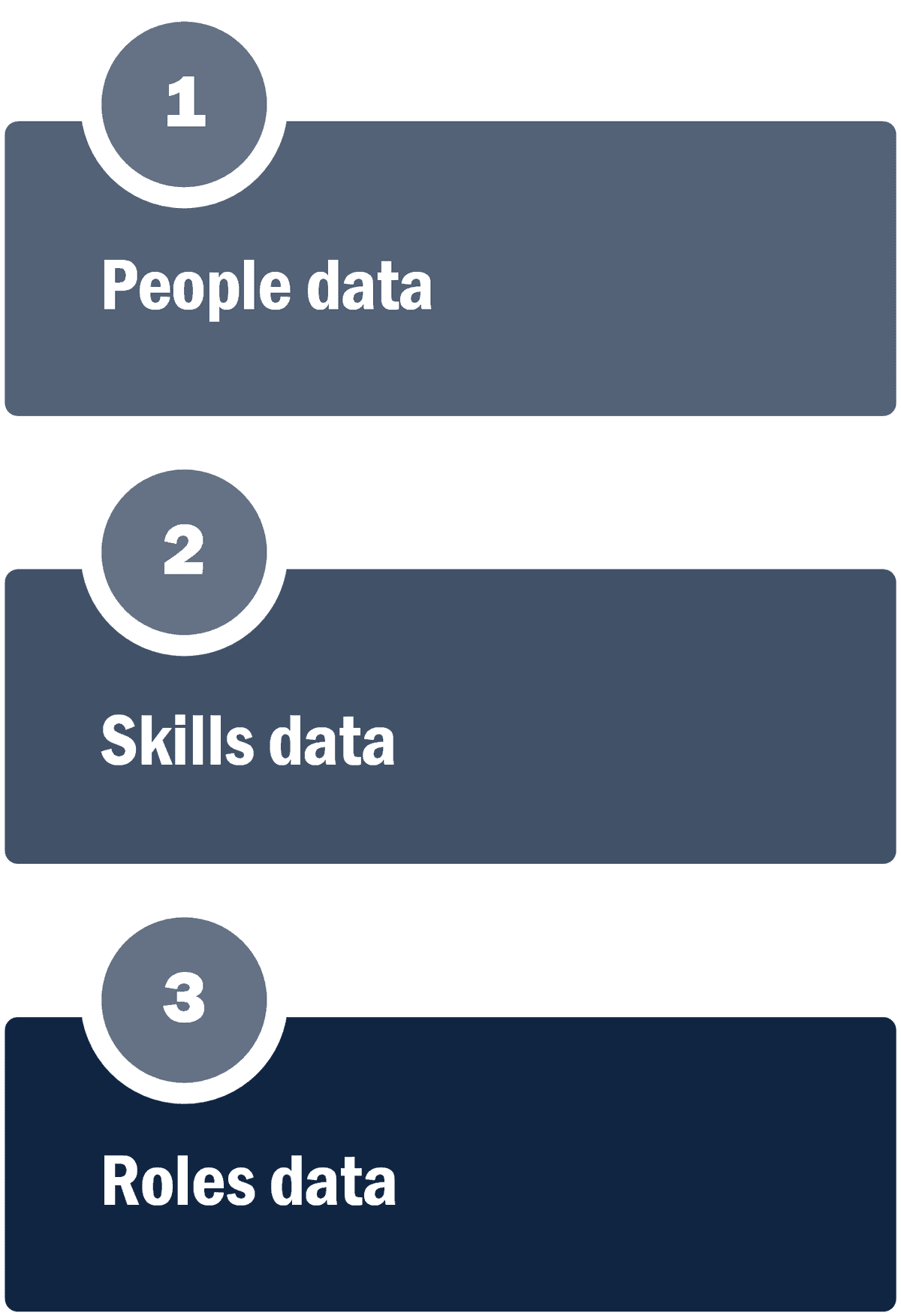
Strategic Workforce Planning for HR teams
We help HR teams use data to improve their workforce planning capabilities.
What is workforce planning?
Workforce planning involves the analysis of current skills and the modelling of future requirements. Modelling a range of scenarios allows senior leaders to compare the impacts of different decisions.
Reports can help HR teams make more informed short-term decisions. HR analytics can help guide medium and longer-term planning. Modelling of different scenarios can compare the impact of decisions.
The CIPD give some examples of workforce planning benefits. The list includes how workforce plans can inform organisation design and talent management.
Successful planning projects involve several steps:
- Review the current workforce headcount across teams, regions and demographics.
- Consider the desired or likely future scenarios, referring to strategic objectives and goals.
- Plan implementation strategies that map the path from the current to the future state.
Workforce planning projects often arise from mergers or acquisitions, cost-saving projects or changes to the business landscape.
An effective HR data strategy is critical to accurate decision making.
Workforce planning tools and reports
Developing a workforce plan requires a range of software, tools, reports and charts.
Planning tools
- Excel is a great starting point when working with data extracts from HCM platforms. Power BI is useful when combining data from more than one source (for example, multiple HCM systems or combining HR data with finance).
- Platforms such as Workday and Oracle Cloud HCM have modules that are particularly useful for ongoing workforce planning requirements.
- We build custom working planning tools that help integrate your existing data sources into your analysis or capture additional data.
Reports and dashboards
We provide ready-to-use and custom reports and dashboards to help businesses of all sizes analyse their current workforce and begin the planning process. For example...
- Current headcount analysis report
- Compensation and benefits report
- Employee attrition rate and unfilled vacancies reports
How we help
Consultancy and advice
Strategic support to help teams set objectives, plan implementation and track delivery.
Data and technology services
Data analysis, data engineering and custom software development services.
Report building and visualisations
Custom reports, charts and dashboards from your existing data.
Data sources for workforce planning
Designing and implementing an effective strategic workforce plan relies on high-quality data. A workforce strategy will need data from three business areas: people, skills and roles.
People data
Every HCM platform will provide employee headcount reports that are useful as a starting point for analysis. Built-in reports can be enhanced or changed to add the required detail. For example, it might be necessary to include additional columns for length of service to help identify likely staff attrition rates.
Employee demographics can identify data points such as likely retirement dates to help develop talent management and succession planning. Historical HCM data is an often ignored yet valuable data source. Employee turnover, reasons for leaving and demographic changes can inform planning for future requirements.
Skills data
Hiring people with the right skills and experience (alongside training and development for current employees) is essential to an effective workforce plan.
Recruitment and onboarding platforms usually provide exports, including data such as length of time to hire and recruitment costs. Further insights often include candidate pool qualifications, industry accreditations etc. Comparing the skills of current employees against organisation goals can help identify future skills gaps.
Roles data
Identifying the gap between current and future workforce roles is fundamental. When used, role profiles can help with talent management and planning. Data from role profiles can be helpful and often gives more insight when combined with the skills data of existing employees.
Segmenting the workforce data can identify important differences. For example, salaries can differ considerably for the same role in different locations. Differentiating between critical and non-critical roles (or skills within job roles) can inform planning decisions such as outsourcing or offshoring.
Employee performance reviews sometimes offer insight into skills gaps across different roles. Progress towards meeting team and organisation goals can inform action plans and long-term goals.
To find out more, please contact us...
Services
Our skills
Viewpoint BI is powered by HR-Fundamentals ltd. © HR-Fundamentals ltd.
Registered in England and Wales, number 0561 5583.
20 Market Place, Kingston upon Thames KT1 1JP
